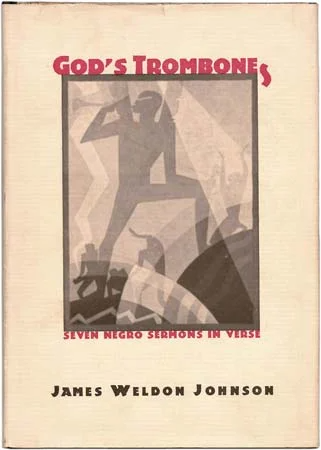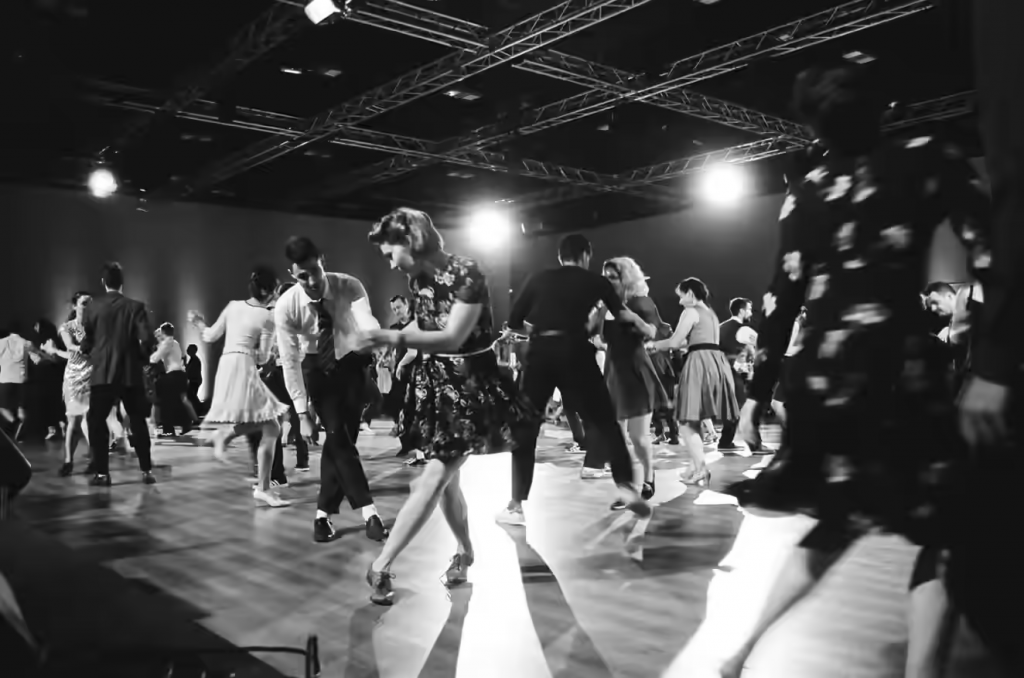As WW1 came to its end, thousands of African Americans moved from the South countrysides to the industrial North. All were desperate to find better economic and social opportunity. After being forced to fight int the war, they returned home with their minds set on better inclusion in American society. Harlem, a small town in New York known for having the highest population of African Americans, attracted immigrants, talented artists, and intellectual leaders with aspirations that would fuel one of the most significant renaissance of African American history.

Dust jacket by the African American artist Aaron Douglas for James Weldon Johnson’s God’s Trombones (1927), a collection of Black dialect sermons.
https://www.britannica.com/art/African-American-literature/The-rise-of-the-New-Negro
Originally referred to as the “New Negro” movement, (Alain LeRo Locke’s The New Negro (1925)), The Harlem Renaissance inspired pride and self-dependance in African American Culture. The movement paved the way for talented new African American visual and musical artists.
Influence in Visual Arts
James Van Der Zee, a photographer was one of the most influential photographers from Harlem. With his talent in photography Van Der Zee always successfully executed the portrayal of a diverse, thriving community.

https://www.nga.gov/learn/teachers/lessons-activities/uncovering-america/harlem-renaissance.html
“I believe that the [African American’s] advantages and opportunities are greater in Harlem than in any other place in the country, and that Harlem will become the intellectual, the cultural and the financial center for Negroes of the United States and will exert a vital influence upon all Negro peoples.”
—James Weldon Johnson, “Harlem: The Culture Capital,” 1925

Bettmann Archive Images
https://www.history.com/topics/roaring-twenties/harlem-renaissance#&gid=ci025d979fd000271c&pid=harlem-renaissance-gettyimages-517322608
The Symbol of Equality
In the 1920s, Jazz filled the streets of Harlem attracting white audience besides Harlem residents. In 1927, the revolutionary new genre of music filled an ecstatic new nightlife, leading to the opening of an integrated ballroom with band stands. This Jazz filled nightclub was known as the Savoy. Developed from slave songs, Jazz, more than any music has been linked with social equality, particularly African Americans.

A Revolutionary Dance
The Savoy Ballroom huge success credits to the unmatchable energy of the dance floor. The Ballroom included some of the most well-known dancers in the New York Area. During an evening in 1927, a dance enthusiast saw a couple dancing and came up with the name “Lindy Hop,” which stuck through the century. Following the Lindy Hop came a catchy tune known as the “Jitterbug”, which paired together with Jazz and Swing Music formed the backbone of Swing Dancing.

https://www.centralhome.com/ballroomcountry/swing.htm
Going to a Swing Dance club has always been on the list of my most memorable experiences. The positive energy of the music paired with the dance is unmatched. If you want to learn an energetic dance with exciting rhythm, it is just for you. Since its origin, Swing Dances has been through constant change, matching the paired tunes. As a social dance, it continues to attract crowds of all ages developing priceless life skills such as trust, improvisation, and connection. It is really fascinating how the Harlem Revolution gave birth to such a thriving, exciting activity the world still enjoys today.
Citations:
https://www.centralhome.com/ballroomcountry/swing.htm
https://www.history.com/topics/roaring-twenties/harlem-renaissance
https://www.jazzinamerica.org/lessonplan/5/4/240
About Swing
https://www.nga.gov/learn/teachers/lessons-activities/uncovering-america/harlem-renaissance.html
https://www.britannica.com/art/African-American-literature/The-rise-of-the-New-Negro
Leave a Reply